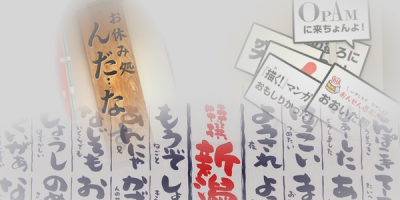
Previously, we discussed the essential link between communicative behavior and character —that is, when the speaker wishes to engage in a certain communicative behavior, he deploys the character that is skilled at that behavior.
Here, “communicative behavior” is not limited to verbal behavior. It also includes nonverbal behavior such as “leering,” “sidling up,” and “pinching knees.”
In other words, this transformation affects the speaker physically as well as verbally. This fact is crucial to understanding Japanese manga, which are currently enjoying international fame.
For example, in volume 4 of Maya Mineo’s Patalliro!(1) , (1980, Hakusensha) the protagonist Patalliro picks a fight with Maraich, whom he has always mercilessly teased, for calling Patalliro a “squashed bean bun.”
Although Patalliro is a child, in the panel in which he is acting belligerently, he breaks into adult Kansai dialect, saying, “Erai iwarekata yanke ware” (What did you call me?!). In this panel, he suddenly has a scar across one cheek, a cigarette holder, sunglasses and a gaudy coat in the style of a Kansai yakuza thug. In the next panel, he has returned (in speech and appearance) to his original childlike self, as if nothing has happened.
This “fast panel-to-panel transformation” in Japanese manga must pose an incomprehensible mystery to international readers. Why can Japanese readers easily understand it, without thinking it mysterious?
It is because they know about the essential link between communicative behavior and character, and in Japan it is common knowledge that the communicative behavior known as “picking a fight” is the specialty of the yakuza. In order to pick a fight with Maraich, Patalliro deploys a character whose specialty is picking fights, the “Kansai yakuza,” and both the verbal and nonverbal effects of this are shown in the aforementioned panel.
In volume 7 of Fujiko F. Fujio’s manga Doraemon (1975, Shogakkan), there is a scene in which Nobita, ecstatic at having secretly obtained some items from the future, says to himself, using polite Japanese, “Kore wa taihen na mono desu yo” (This is a terribly fine item).
In order to understand this use of polite language, it is helpful to imagine that Nobita himself is deploying a character good at making judgments, such as an “appraiser” or “art critic,” to appraise the item for himself, and in doing so has increased his pleasure in it. After all, Japanese appraisers and art critics always speak politely.
Doraemon is a classic manga, and does not use the technique of physically transforming the characters. However, if this were a relatively recent manga, perhaps Nobita would transform into a middle-aged gentleman, dressed as an appraiser or critic, with swept back hair and a pipe, or in Japanese-style clothes and sporting a beard, saying “what nice workmanship” with a meaningful glint in his glasses.
* * *








(1) Patalliro! is a comedy manga in the “shonen-ai” genre. It focuses on Patalliro, the 10-year old king of a fictional country, his assassin Maraich and bodyguard, Bancoran. It has proven incredibly successful, running from the late 1970s up to the present day.